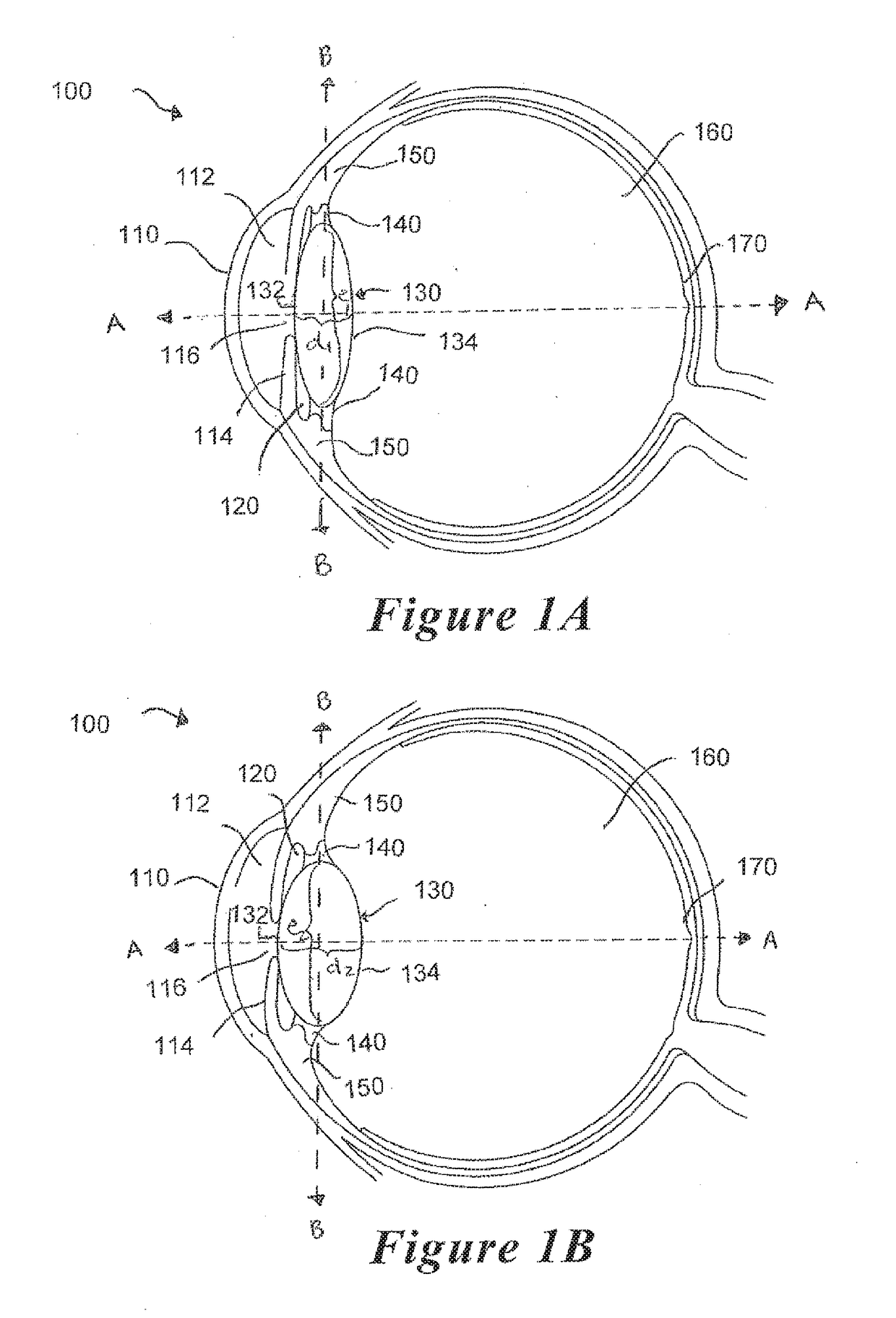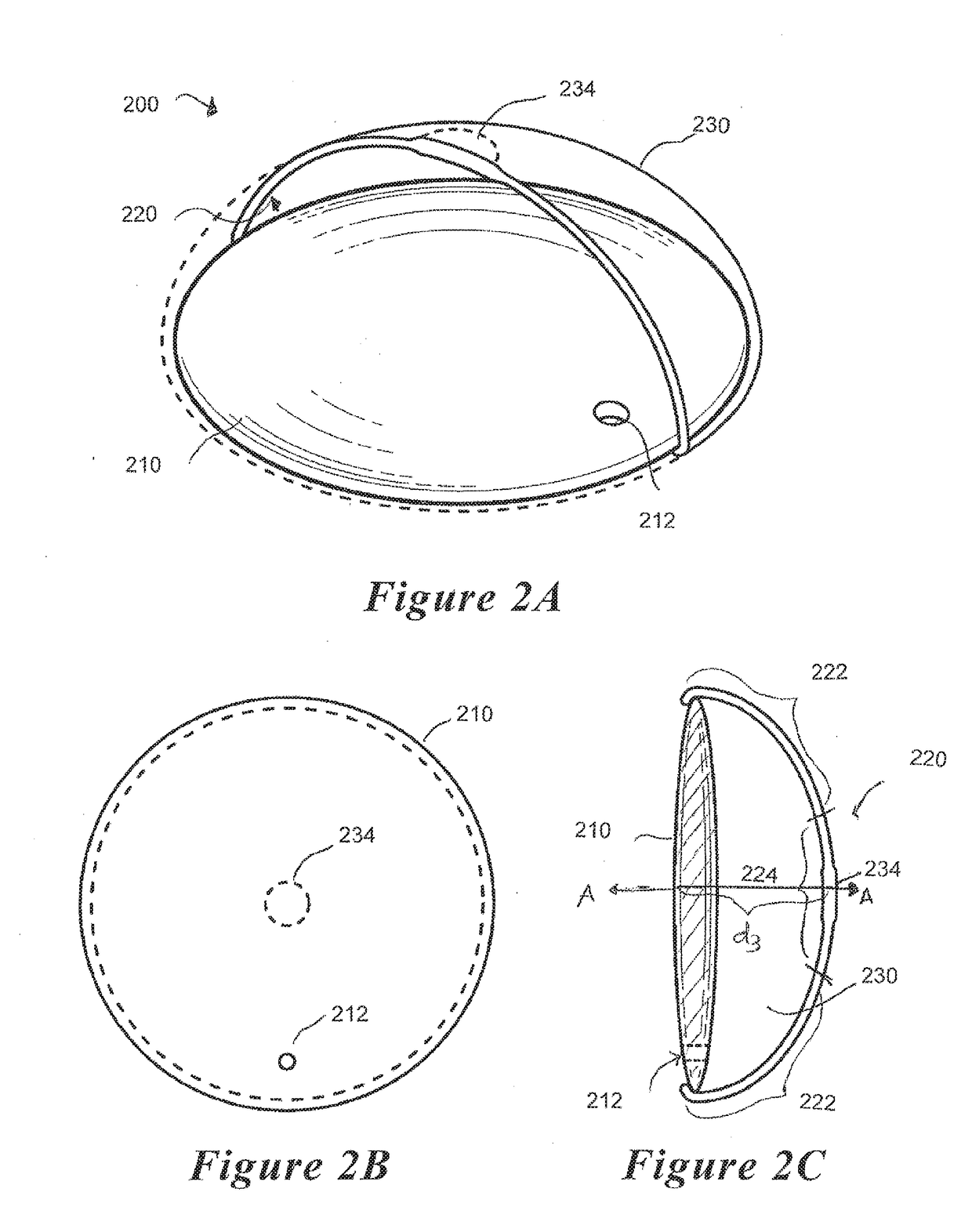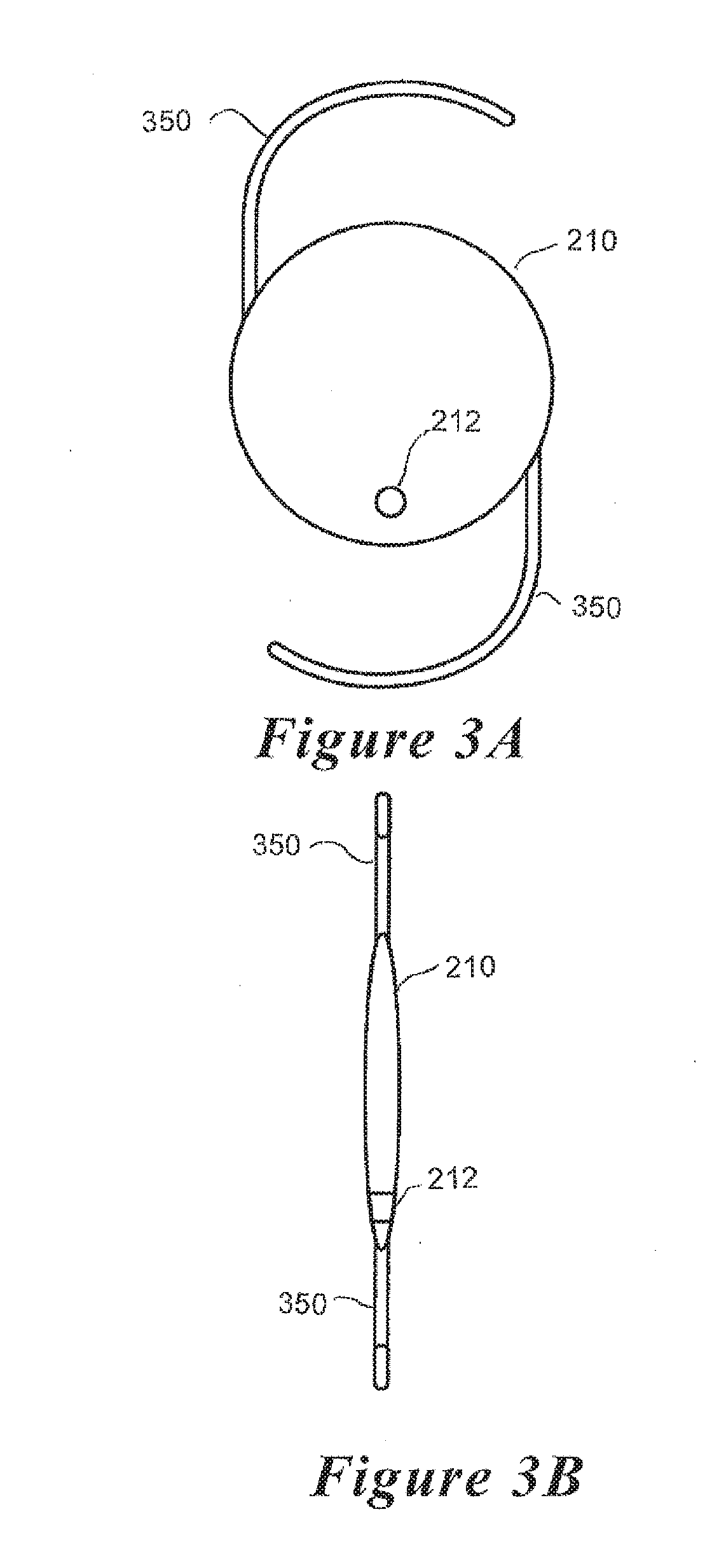Accommodating intraocular lens
a technology of intraocular lens and lens capsule, which is applied in the field of accommodating intraocular lens devices, can solve the problems of shrinking the natural lens capsule about the device, affecting the effect of the device, and advancing cataracts to eventual vision loss and even complete blindness
- Summary
- Abstract
- Description
- Claims
- Application Information
AI Technical Summary
Benefits of technology
Problems solved by technology
Method used
Image
Examples
Embodiment Construction
[0037]Specific, non-limiting embodiments of the present invention will now be described with reference to the drawings. It should be understood that such embodiments are by way of example only and merely illustrative of but a small number of embodiments within the scope of the present invention. Various changes and modifications obvious to one skilled in the art to which the present invention pertains are deemed to be within the spirit, scope and contemplation of the present invention as further defined in the appended claims.
[0038]As shown in FIGS. 1A-B, the human eye 100 comprises three chambers of fluid: the anterior chamber 112, the posterior chamber 120 and the vitreous chamber 160. The anterior chamber 112 corresponds generally to the space between the cornea 110 and the iris 114 and the posterior chamber 120 corresponds generally to the space bounded by the iris 114, the lens 130 and zonule fibers 140 connected to the periphery of the lens 130. The anterior chamber 112 and th...
PUM
 Login to View More
Login to View More Abstract
Description
Claims
Application Information
 Login to View More
Login to View More - R&D
- Intellectual Property
- Life Sciences
- Materials
- Tech Scout
- Unparalleled Data Quality
- Higher Quality Content
- 60% Fewer Hallucinations
Browse by: Latest US Patents, China's latest patents, Technical Efficacy Thesaurus, Application Domain, Technology Topic, Popular Technical Reports.
© 2025 PatSnap. All rights reserved.Legal|Privacy policy|Modern Slavery Act Transparency Statement|Sitemap|About US| Contact US: help@patsnap.com



